wHY designs Frieze Los Angeles tent at Paramount Studios location

The inaugural Frieze Los Angeles kicks off with a new indoor and outdoor tent design by local architecture studio wHY. Pitching up at Paramount Studios, Frieze’s new location in Hollywood celebrates the city’s creative eco-system, while the tent design brings in the Californian light and makes the most of the good weather with outdoor spaces and green walls.
‘We basically surgically insert the tent into a working busy film studio,’ says Kulapat Yantrasast, founder and creative director at wHY, and a Los Angeles resident since 2003. He wanted to create the effect of being backstage, and reflect the ‘less rigid’ art scene of LA, in comparison to other contemporary art hub cities.

Green outdoor space at Frieze LA
A pink banner afloat two archways wrapped in faux-foliage welcomes you to the fair. The structure is a reference to the Paramount Studios’ famous double arch entrance on Melrose Avenue. Yantrasast used plants throughout, real and artificial, to anchor the fair into its new climate. Inside the entry pavilion, blue-stained plywood is constructed using set-building techniques of the studio’s master production designers.
RELATED STORY

Frieze London, 2009
Architecture and branding have developed a close relationship across the Frieze art fair design since it launched in 2004. Here, at the 2009 rendition in London, the trademark Frieze stamp appears like a billboard atop three chunky architectural columns marking the entrance. While the branding has become more muted as the fair has matured, this bastion is reminiscent of the early Frieze days. As a streak of continuation, sections of the fair continue to be highlighted by a series of neon shades.
Being at an art fair is often like being in a fluorescently-lit black hole, where you lose all sense of time. Yet wHY’s opaque and translucent plastic ceiling panels bring in more daylight than ever before for an enjoyable viewing experience – and the gallerists’ wellbeing – for the week.
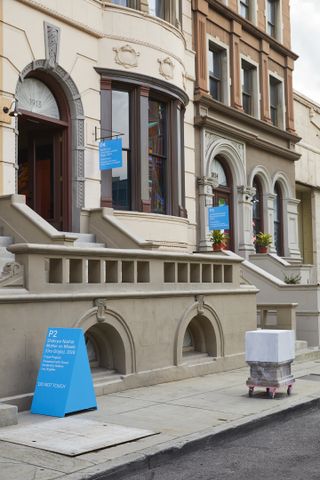
Art displayed outside at the Paramount Studios set.
Indoor areas are balanced by outdoor spaces that feature open-air artworks by Sarah Cain, Paul McCarthy and Barbara Kruger amongst others. Los Angeles is after all blessed with more reliable forecasts than London or New York, where Frieze spends the rest of its year.
Before reaching your destination booth, you might also be tempted by cult eateries SQIRL and Roberta’s, both woven into the experience along the way. Building a pathway to guide visitors from pulling up at the curb to writing a cheque, was the main aim of Yantrasast – as Frieze Art Fair has continued to prove since its founding in 2003, the art fair can be a lively social and educational experience too.
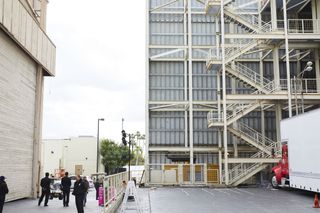
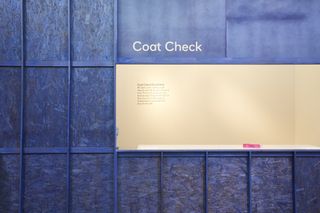
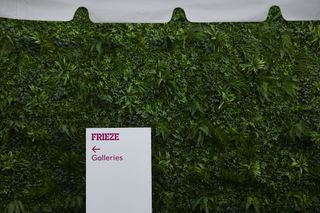



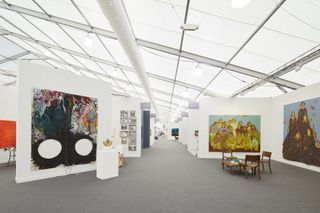
INFORMATION
For more information, visit the wHY Architecture website
Wallpaper* Newsletter
Receive our daily digest of inspiration, escapism and design stories from around the world direct to your inbox.
Harriet Thorpe is a writer, journalist and editor covering architecture, design and culture, with particular interest in sustainability, 20th-century architecture and community. After studying History of Art at the School of Oriental and African Studies (SOAS) and Journalism at City University in London, she developed her interest in architecture working at Wallpaper* magazine and today contributes to Wallpaper*, The World of Interiors and Icon magazine, amongst other titles. She is author of The Sustainable City (2022, Hoxton Mini Press), a book about sustainable architecture in London, and the Modern Cambridge Map (2023, Blue Crow Media), a map of 20th-century architecture in Cambridge, the city where she grew up.
-
 10 books culture editor Hannah Silver recommends this winter
10 books culture editor Hannah Silver recommends this winterLacking inspiration over what to read next? Wallpaper* culture editor, Hannah Silver, shares her favourite books
By Hannah Silver Published
-
 Midtown Manhattan restaurant Ánimo! takes its cues from Mexican morning rituals
Midtown Manhattan restaurant Ánimo! takes its cues from Mexican morning ritualsDesigner Jordana Maisie creates a minimalistic yet referential setting for Ánimo!
By Adrian Madlener Published
-
 First look: Leica Cine Play 1 brings premium style and tech to the world of home cinema
First look: Leica Cine Play 1 brings premium style and tech to the world of home cinemaLeica compresses its meticulous optic know-how into the ultra-compact Cine Play 1 4K projector
By Jonathan Bell Published
-
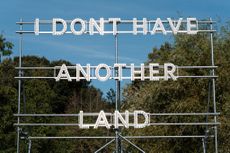 Frieze Sculpture takes over Regent’s Park
Frieze Sculpture takes over Regent’s ParkTwenty-two international artists turn the English gardens into a dream-like landscape and remind us of our inextricable connection to the natural world
By Smilian Cibic Published
-
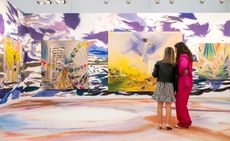 Frieze London 2024: everything to see and do
Frieze London 2024: everything to see and doLondon Frieze Week runs until 13 October 2024; here are the must-sees inside and outside the fair
By Amah-Rose Abrams Last updated
-
 Frieze New York 2024: what to see in and around the city
Frieze New York 2024: what to see in and around the cityFrieze New York 2024 (until Sunday 5 May) sees the city’s ample spring season programming celebrated at The Shed
By Osman Can Yerebakan Published
-
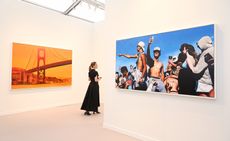 Frieze LA 2024 guide: the art, gossip and buzz
Frieze LA 2024 guide: the art, gossip and buzzOur Frieze LA 2024 guide includes everything you need to know and see in and around the fair
By Renée Reizman Published
-
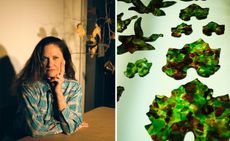 Andrea Bowers’ sculptural chandelier for Ruinart reflects a shared commitment to environmental conservation
Andrea Bowers’ sculptural chandelier for Ruinart reflects a shared commitment to environmental conservationAndrea Bowers has partnered with Ruinart to create a work to be unveiled at Frieze LA, before it finds a permanent home at Maison Ruinart’s HQ in Reims
By Hannah Silver Published
-
 MJ Harper’s performance piece at London’s Koko will close Frieze Week in style
MJ Harper’s performance piece at London’s Koko will close Frieze Week in styleArtist MJ Harper will premiere ‘Arias for a New World’ at Koko in London this Sunday, 15 October 2023
By Amah-Rose Abrams Published
-
 The Modern Institute explores otherworldly narratives at Frieze London 2023
The Modern Institute explores otherworldly narratives at Frieze London 2023The Modern Institute is showcasing the work of artists Rachel Eulena Williams, Jim Lambie and Andrew Sim and more
By Anne Soward Published
-
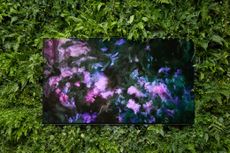 Quayola x LG OLED bring digital Impressionism to Frieze London
Quayola x LG OLED bring digital Impressionism to Frieze LondonQuayola x LG OLED present Jardins d’Été, an immersive work that mixes Old Masters’ florals with super vivid 4K technology
By Simon Mills Published